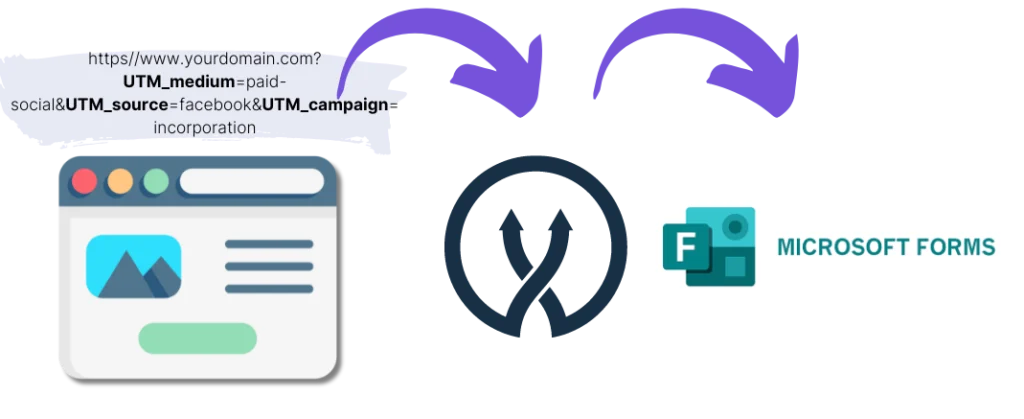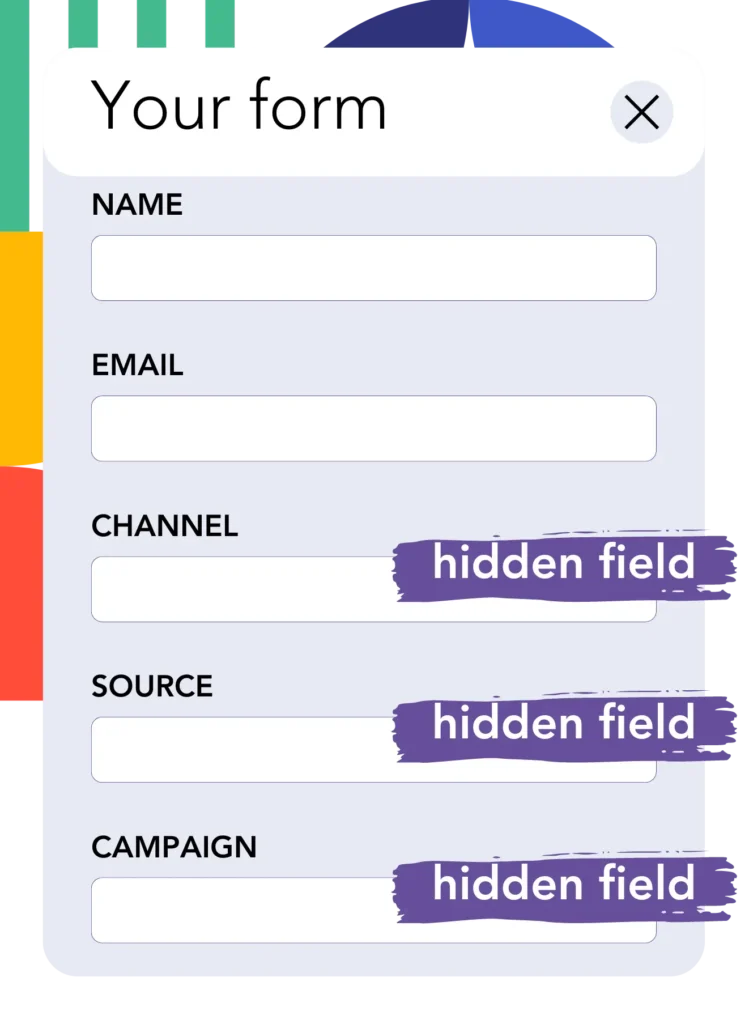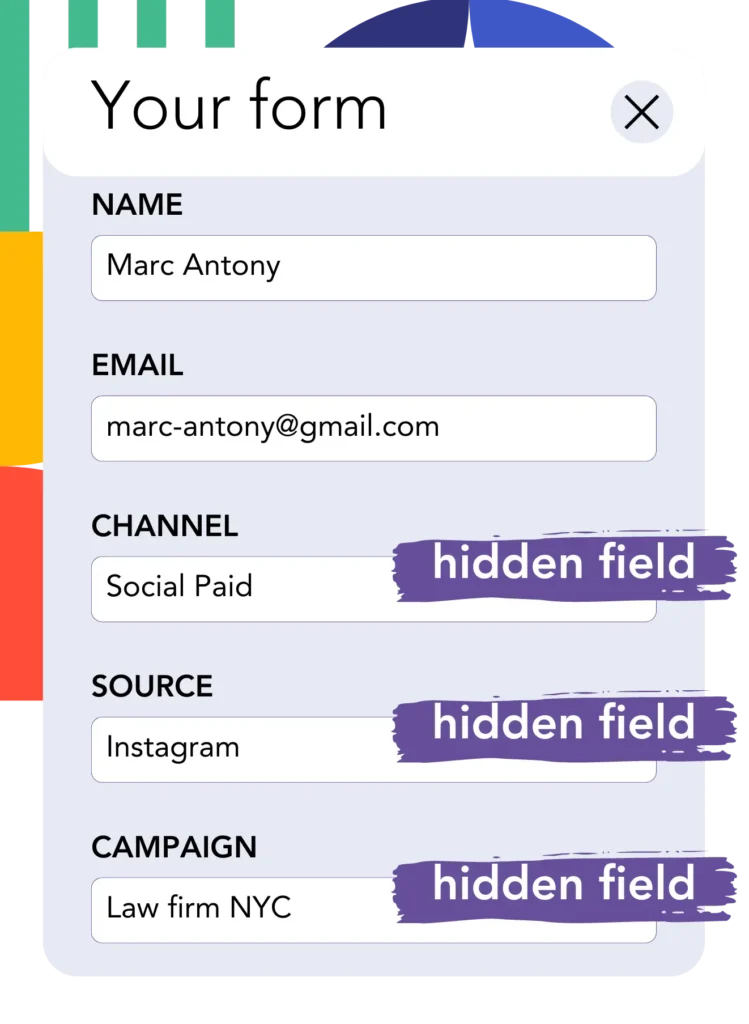Struggling to add UTM tracking to Microsoft Forms due to a lack of coding experience?
What if there was an easy way to capture UTM parameters in Microsoft Forms without needing any coding?
Meet Leadsources.io!
Leadsources is a tool designed to help you track lead sources by bridging the gap between your UTM parameters and Microsoft Forms.

When a user clicks on your marketing campaign link, Leadsources captures the UTM parameters from the URL.
It then automatically transfers these UTM parameters to the hidden fields in your Microsoft Forms.
You can view these UTM parameters along with the lead’s details on the submission page in Microsoft Forms.
This guide will show you how to set up UTM tracking in Microsoft Forms in just 10 minutes using Leadsources, with no coding required.
How to Implement UTM Tracking in Microsoft Forms in 4 Simple Steps
Step 1: Insert Leadsources Code into Your Website’s Head Tag

First, sign up for Leadsources.io to start your 14-day free trial.
Add the Leadsources code to the head tag of your website. No need for coding skills or a developer; just follow the straightforward guides we provide.
Step 2: Add UTM Parameters to Your Marketing Campaigns

Include the UTM parameters you wish to track across all your marketing activities (PPC, email, social media, etc.).
Leadsources supports the following UTM parameters:
- UTM_source
- UTM_campaign
- UTM_term
- UTM_content
Additionally, Leadsources captures details beyond UTM parameters, such as the channel, landing page, and subfolder.
Step 3: Configure Hidden Fields in Your Microsoft Forms

As visitors complete your Microsoft Forms, they enter personal information in the visible fields (name, email, etc.).
At the same time, Leadsources.io automatically populates the UTM parameters into the hidden fields of your Microsoft Forms (channel, source, etc.).
To set up hidden fields, edit the form you want to modify in Microsoft Forms.
Create Your Form:
- Open Microsoft Forms and create a new form.
- Add all the fields you need, including the ones you want to hide.
Identify Field Names:
- Microsoft Forms uses field names as query parameters. To identify the parameter names, preview the form and inspect the URL parameters.
Add the exact following fields one by one:
- channel
- source
- campaign
- term
- content
- landingpage
- landingpagesubfolder
Step 4: Track UTM Parameters in Microsoft Forms

When someone clicks on your campaign and visits your website, Leadsources captures the UTM parameters from the URL.
As the visitor fills out the Microsoft Forms, Leadsources inserts the UTM parameters into the hidden fields, which are not visible to the user.
Upon form submission, both the UTM parameters and the form responses are recorded.
How does Leadsources work?
By adding the Leadsources code to your website’s head tag, it captures UTM parameters from your URLs whenever someone visits your site.
It then stores these parameters in the hidden fields of your Microsoft Forms.
Even if a visitor arrives without UTM parameters, Leadsources still captures valuable data like:
- Channel
- Source
- Campaign
- Landing page
- Landing page subfolder
This means you can track lead sources even if you’re not using UTM parameters.
- On Google Search
- On your Instagram bio link
- On your social media posts
Unlike most tools that rely solely on UTM parameters to track lead sources, Leadsources enables you to identify the origin of your leads from any source, with or without UTM parameters.
- Organic Search
- Paid Search
- Organic Social
- Paid Social
- Referral
- Affiliate
- Display Advertising
- Direct Traffic
This enables you to gather clean lead source data in one centralized location.
How to Generate Performance Reports
Once you’ve captured your UTM data in Microsoft Forms, you can create reports to analyze performance, such as:
- Leads per channel
- Revenue per channel
- Revenue per keyword
These reports help you make smart decisions about your marketing strategies.
Here’s a look at the types of reports you can generate:
Lead performance reports
You can run reports that show the volume of leads generated by:
- Channel
- Source
- Campaign
- Landing page
- Landing page subfolder
Example #1
You run campaigns across various channels like SEO, PPC, and email marketing. By exporting the collected data, you can create a report titled “Leads by Channel” to see which channels are generating the most leads.

Example #2
After identifying the channel that drives the most leads, such as Google Ads, you can further analyze this channel by examining the number of leads generated by each individual ad campaign.

Example #3
Once you know which campaign brings in the most leads, you can dig deeper by extracting the campaign and analyzing the keywords that are driving these leads, creating a “Leads by Keyword” report.

Sales performance report
Knowing which ads and keywords generate the most leads is important, but it’s also crucial to understand which ones contribute most to your revenue.
By sending your Microsoft Forms submissions to a CRM like GoHighLevel, you can generate sales reports based on this data.
Example:
| Channels | Search Paid | Social Paid |
| Leads | 50 | 75 |
| Sales | 5 | 6 |
| Average order value | $150 | $100 |
| Revenue | $750 | $600 |
You ran ads on both Google and Facebook and the first report indicated that Social Paid ads had higher lead numbers compared to Search Paid ads.
However, after tracking which leads became paying customers, you found that Search Paid ads had a higher revenue return per lead, making you to adjust your budget in favor of Search Paid ads.
